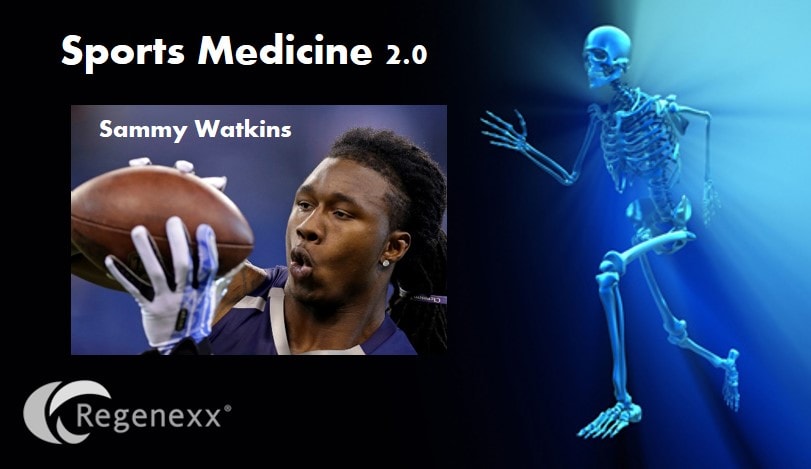Sammy Watkins’ Hip Injury – Did He Do the Right Thing?
I was watching ESPN the other day and heard about Sammy Watkins’ hip injury and subsequent surgery. This caught my attention as this kid was a great receiver in college and now that he’s landed with the Bills he’s continued to be a great young receiver. However, as I watched, it dawned on me that most people listening to the news report would have no idea that he had other less invasive options to treat his small hip labral tear, or what I call Sports Medicine 2.0. Basically, it’s likely this kid could have been back to training in a few weeks rather than out the whole season and then some. Let me explain.
Sammy had a small tear in his hip labrum, which is the lip around the socket where the ball of the hip joint fits. This lip of tissue is believed to help stabilize the hip. However, the first question for Sammy would have been, do we even know that a small tear seen on MRI had much to do with his hip pain? The answer is not really. Many studies have shown that in athletes without hip pain, labral tears are common. This means that since there are many things that can cause hip pain (problems in the low back, SI joint, muscles around the hip, tendons around the hip) just because someone saw a small tear in the labrum in a patient with hip pain is not in of itself any indication that the labral tear was causing pain or problems. So was his small hip labrum tear even causing him problems? We may never know…
Second on the list of whether Sammy should have pulled the trigger is another big issue. Do we know these hip labrum surgeries work? Most patients and athletes would assume that if some surgeon was planning on disarticulating their hip, pulling massive traction enough to potentially harm the major nerve in the hip (femoral), and then slicing, dicing, and stitching back together the labrum that we must have very good research that shows that this surgery is effective. Nope, we don’t have good studies that show that this surgery will allow Sammy to stay in the NFL any longer, or that it will even help his hip pain (if that’s being caused by the labral tear). Here’s another study from last year that complains that we don’t have good evidence that these hip arthroscopy surgeries work.
Is there a Sports Medicine 2.0 alternative that’s less invasive, non-surgical, and would allow Sammy to get back to the NFL quicker? Precise platelet rich plasma injections without surgery into the hip labrum tear have recently been shown in one study to be helpful. We’ve also used stem cells injections in other elite athletes to help heal these small hip labrum tears.
The upshot? Why didn’t Sammy try a Sports Medicine 2.0 approach and reduce his downtime and risk of never returning to the NFL by getting his own blood platelets or stem cells precisely injected into the tear to see if it would heal? Given his $19.9 million dollar rookie salary, that could be the twenty million dollar question!

If you have questions or comments about this blog post, please email us at [email protected]
NOTE: This blog post provides general information to help the reader better understand regenerative medicine, musculoskeletal health, and related subjects. All content provided in this blog, website, or any linked materials, including text, graphics, images, patient profiles, outcomes, and information, are not intended and should not be considered or used as a substitute for medical advice, diagnosis, or treatment. Please always consult with a professional and certified healthcare provider to discuss if a treatment is right for you.

